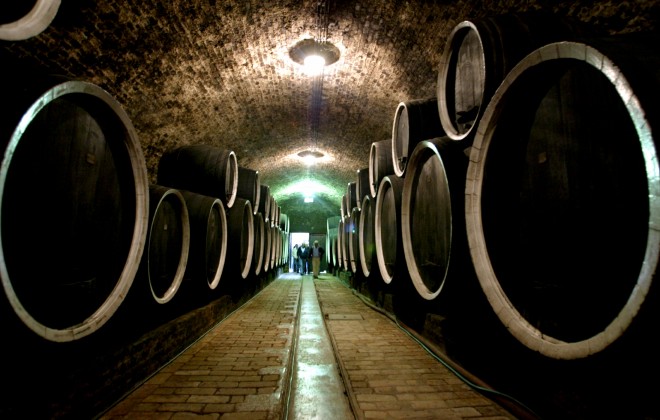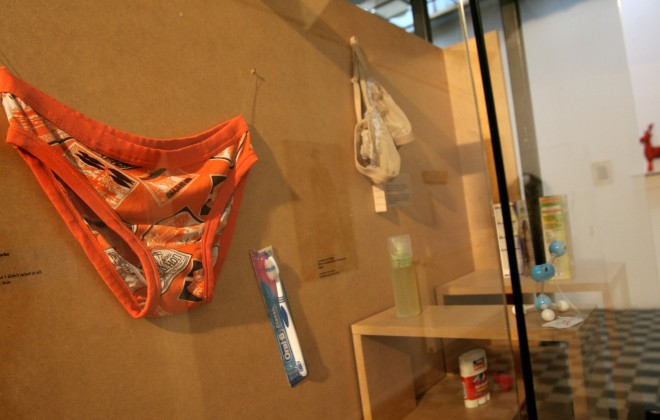
Croatia’s growing popularity as a tourist destination hasn’t led to a levelling down of gastronomic standards; on the contrary it has had the effect of tweaking them upwards. The rediscovery of regional recipes, a boutique approach to wine production, and a flair for combining creativity with tradition are the main themes of Croatia’s burgeoning foodie culture. Here are a few of my top picks and where to find them
Pršut and paški sir on Pag
Croatia’s most celebrated hors d’ouevre is pršut: home-cured ham served in thin, melt-in-the-mouth slices. It is often served alongside paški sir (cheese from the island of Pag), whose distinctive taste lies somewhere between mature cheddar, parmesan and mouldy sock. Made from the milk of sheep, which graze on wild sage covered in wind-borne sea-salt, the cheese is rubbed with a mixture of olive oil and ash before being left to mature.
Anchovy pie on Vis
Many of Croatia’s islands have preserved traditional foodstuffs that are hard to find elsewhere. The southern Dalmatian island of Vis is home to Viška pogača (anchovy pie), a delicious snack that consists of a cake-like wad of pastry stuffed with anchovy and onion. Vis Town and neighbouring island Komiža each remain proud of their rival recipes – the Komiža version contains lashings of tangy tomato.
Oysters in Ston
There’s something special about eating oysters and mussels just metres away from where they are harvested, and the bay-hugging community of Mali Ston is the best place to do it. Several restaurants serve the locally farmed molluscs; Kapetanova Kuća is one of the longest established. Local rivals Bota Šare have branched out by opening the Bota Oyster and Sushi Bar down the coast in Dubrovnik – for an exquisite taste of Japanese-Adriatic fusion, slurp back a few of Bota’s tempura Ston oysters.

Scampi in the Kvarner
Seafood in the Kvarner Gulf is as good as anywhere on the Croatian coast, although the region is famous above all for its škampi, or scampi, which thrive in this part of the Adriatic due to the sea’s uniquely sandy bed. They are invariably served whole and unpeeled – the traditional way to eat them is with your fingers, prizing them open and sucking out their succulent white flesh. Ask for škampi na buzaru, a classic recipe, and your digits will be dripping with garlic and wine sauce in no time. The cute Kvarner fishing village of Volosko boasts some of the finest seafood restaurants in the country, and is an ideal place to sample the local scampi: chic restaurant Plavi Podrum has a whole menu devoted to the crustaceans.
White Wine from Ilok
With cellars galore grouped around an imposing hilltop castle, the Danube-hugging town of Ilok is fast becoming eastern Croatia’s most compelling wine destination. Iločki podrumi is one of Croatia’s biggest wineries, producing on average over 4.5 million litres of the good stuff each year, although it’s the large number of independent wineries that give the town its flavour. Dry white Graševina (also known as Welschriesling) represents the bulk of local output, although there’s a good deal of experimentation going on thanks to a new breed of creative vintners. Most sell their wines directly to visitors: call on the Buhač family to get a first-hand taste of what’s going on in contemporary Croatia’s vineyards.
Fiš paprikaš in the Baranja
In the flatlands of eastern Croatia paprika is king; and the region’s signature dish is fiš paprikaš: a fiery red cauldron of carp, catfish and pike-perch. It’s in the villages of the Baranja, north of Osijek, that the best fiš is to be found, with family-run inns like Kod Varge in Bilje and Kovač Čarda in Suza attracting visitors from far and wide. Fiš contains big chunks of un-skinned, un-boned fish (it’s tastier that way), and is usually served with mounds of tagliatelle-like noodles. And if the waiter offers you a bib with your meal try to stifle the chuckles – you’ll be laughing on the other side of your face when you see the red stains spattered all down your front.
Peka on the Dalmatian islands
Slow-roasting veal, lamb or octopus under an ember-covered metal lid known as a peka is one traditional route to a deliciously succulent meal. You can enjoy a peka-prepared feast in almost any Adriatic restaurant that has a stone hearth to cook it on, and a free morning in which to stoke up the fire. Peka culture is particularly widespread among the inland communities of Hvar, Korčula and Brač, where cattle or sheep were traditionally more readily available than freshly-caught fish. Reserve a table at traditional-food restaurants like Dvor Duboković in Pitve, Hvar; or Ranč Maha near Žrnovo, Korčula, and you won’t be disappointed.
Truffles in Istria
Istria is in many ways the heartland of Croatian foodie culture. Good home cooking is very much the rule here and you are assured of a good meal almost everywhere you go. Of particular local significance is the truffle, the highly-prized subterranean fungus that flourishes in the deciduous forests around the towns of Motovun and Buzet. Most of the region’s restaurants will have at least one truffle-based recipe on the menu, very often the simpler the better –a humble truffle fritaja (omelette) can be particularly divine.
Red wine on Hvar
The rich red Plavac Mali is Dalmatia’s dominant grape variety, and there’s an awful lot of it on Hvar, where it’s grown throughout the central, fertile areas and along the southern coast. Bottled wines produced by the Svirče cooperative are sold in supermarkets throughout Croatia and their inexpensive ‘Plavac Hvar’ red represents mind-bogglingly good value. Among the boutique producers breaking new ground with their crafted Plavac wines are Ivo Duboković, and Andro Tomić, both based near Jelsa – a bottle or two from either source would be well worth splashing out on.
Marzipan pie on Rab
Widely available in shops and cafes on the island of Rab, the deliciously sweet Rab Cake (Rabska torta) is really more of a pie than a cake, consisting of a delicious soft marzipan centre wrapped in a sugary dough that is part pastry, part biscuit. Vilma and Kiflić are the main local producers and their recipes are rather different – thereby providing you with a perfect excuse to try them both.
Olive oil from Dalmatia
Much of Dalmatia produces high-quality olive oil although it is arguably on Korčula that the most seductively take-me-home blends are to be found. Indigenous olive varieties like Lastovka and Drobnica are known for their high antioxidant content and sharp peppery taste. Marko Polo, bottled by the farmers’ cooperative in Blato, is one of the best mid-price oils in the country. Torkul oil, produced by the family-run Fanito distillery in Vela Luka, is famous for its smooth-but-bitter character and is much sought after throughout Croatia. If you’re interested in seeing how the stuff is produced, the Olive Oil Museum run by the Zlokić family just outside Vela Luka, has an intriguing display of presses and offers plenty of the stuff for sale.
Explore more of Croatia and the country’s wonderful food in the Rough Guide to Croatia.



